It’s time for the next installment of my OWLS! series of blog posts! This one is going to be a little bit different from my other posts…although, if you’ve read any of my Bigfoot or ghost posts you may not be surprised at the theme of this post.
My research takes me down a few interesting rabbit holes. One of these holes introduced me to J. A. S. Collin de Plancy’s Dictionnaire Infernal when I searched for “giant owls.” I was looking at adaptations that cursorial (ground-running or walking) birds have in the tarsometarsus bones. That is where I encountered Stolas.
Stolas is my favorite (is favorite the right word?) character of Collin de Plancy’s demon mythology from the perspective of both an owl fanatic and a palaeontologist. Collin de Plancy describes Stolas on page 635-6 of the Dictionnaire Infernal:
“Stolas, grand prince des enfers, qui apparaît sous la forme d’un hibou ; lorsqu’il prend celle d’un homme et qu’il’se montre devant l’exorciste, il enseigne : l’astronomie, ainsi que les propriétés des plantes et la valeur des pierres -précieuses. Vingt-six légions leire connaissent pour[;] general.”
Here is my extremely rusty high school French (with a double-check in Google Translate) translation:
“Stolas, great prince of Hell, who appears in the form of an owl; when he takes that of a man and shows [himself?] before the exorcist, he teaches astronomy, as well as the properties of plants and the values of precious stones. Known for Twenty-six legions; general.”
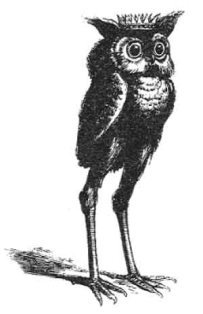
If Stolas were real, he’d likely be a great resource of information for many in astronomy, botany, and geology. The geology link of Stolas is what makes the connection of Stolas to paleontology even more interesting. As a field palaeontologist I would find a twenty-six-legion strong field crew very useful.
Most of the demonic entities in the Dictionnaire Infernal (and earlier works on the same subject) appear as human-animal hybrids or large versions of familiar animals. Collin de Plancy does not give us a sense of scale but one’s brain does jump to “large,” or at least larger than life, when talking about demons. The dimensions of Stolas are fascinating: the woodcuts of Collin de Plancy show an owl with rather long legs, standing on the ground. The legs are longer than the body. There’s a lot going on with the appearance of Stolas that suggests he is a walker. It is unlikely that Stolas’ teeny owl body with those teeny owl wings and itty-bitty tail could haul around those legs during flight (especially while wearing his resplendent crown.)
Bestiaries and Owls
Owls appear frequently in the medieval literature, particularly in bestiaries. Bestiaries (no, not bestiality, although the root of both words is the same) depict animals both real and fanciful, from the Amphisbaena (a serpent with a head at either end), to odd interpretations of real animals. Did you know the Barnacle Goose grows from trees, dangling from their beaks? According to the Harley Bestiary (c. 1230-1240), that’s where Barnacle Geese come from!

Or how about bees: did you know that bees come from the decay of the putrid flesh of calves or oxen (Isidore of Seville, 7th century CE)? Some explanations are implausible, others are darn ridiculous, but they were interpretations based on observations made at the time. The prevailing wisdom of the day, according to the bestiaries, was that owls were dirty, slothful birds that pollute their nests with their own dung. Barn owls do build up a layer of pellets in their nests when the young are still in house and feeding, but most birds are pretty good at keeping waste out of their nests. It was common knowledge that owls frequent graveyards and tombs, and their cries are harbingers of an impending death. It’s not a glowing letter of recommendation.
Owls and their portrayal in bestiaries is a whole other post, but these bestiaries were written in the 12th – 16th centuries. Bestiaries were not immune to the prevailing attitudes of the day. Some of these ideas were, well, racist and antisemitic as flock. With the negative interpretations associated with owls, it makes sense that someone with an interest in both the natural and the spiritual world would have a demon appear as a larger-than-life owl, ready to run you down if you lost your nerve during a demon summoning. We can safely say that Collin de Plancy and Friends didn’t actually summon Stolas (or any demon) to pose for a sketch artist. We can chalk up mystic depictions of demonic giant walking owls as a stroll down Imagination and Theology Lane.
The Giant Cuban Owl
Fast forward to Cuba, 1954, where we actually have knowledge of a giant owl. The Cuban Giant Owl Ornimegalonyx was an owl of the Late Pleistocene (126,000 – 11,700 years ago, also known as the Ice Age). Ornimegalonyx was discovered on January 2, 1954 and was recognized as the remains of a large predatory bird. The discovery site was a large cavern called Pio Domingo Cave located in the Sierra de Sumidero, opposite Pica-Pica Valley in Pinar del Rio. Ornimegalonyx was originally described by Oscar Arrendondo (1958) in a publication called El Cartero Cubano. Oscar Arrendondo originally used Ornimegalonyx arrendondoi as a provisional name, and he later uses Ornimegalonyx oteroi as the official name in his 1958 publication describing the type specimen. Arrendondo used the name “oteri” in honor of speleologist (scientists who study caves) and expedition member Juan N. Otero (Arrendondo, 1958). The type material (the bones that everyone has to look at if you want to work on fossilized giant owls) consists of a fragmentary femur (thigh bone), three fragments of a tibiotarsus (shin bone), an incomplete tarsometatarsus (the lower part of the “backwards-looking-knee” of a bird – it’s the same as our ankle), and some toe bones (phalanges).

Original descriptions of Ornimegalonyx have it belonging to the group Phorusrhacidae (also known as “terror birds”) because of the large size. Back in 1958, large owls were not on people’s radar. This small collection of bone fragments doesn’t sound like a lot on which to base the naming of a new critter, but there are parts of owl leg and foot bones that are Classic Owl. Ornimegalonyx was estimated to have stood about 1.1 m (3’7”) tall and likely weighed around 9 kg (20 lbs).
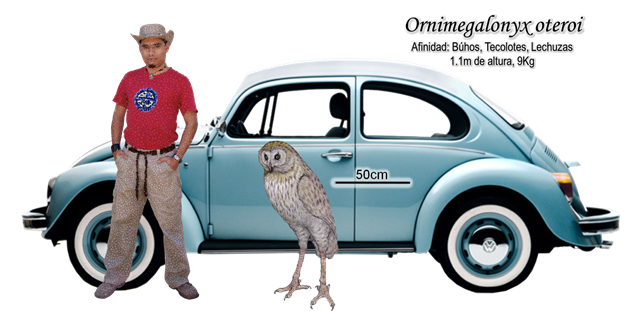
As owls go, Ornimegalonyx (orni = bird; mega = large) lives up to its name. Let’s look at its size in comparison to a fairly well-known and our largest owl alive today, the Eurasian Eagle-owl (Bubo bubo). The leg bones, the femur (thigh bone) plus the tibia (shin bone) plus the metatarsals of an Eurasian Eagle-owl are 10.8 cm, 15.5 cm, and 8.4 cm, respectively. We can estimate the leg length of the Eurasian Eagle-owl (give or take some soft tissue and cartilage) at 34.7 cm (or about 13.6 inches) long. The leg bones of Ornimegalonyx are 15.4 cm, 25.0 cm, and 14.7 cm. The estimated leg length of Ornimegalonyx is 55.1 cm (or 21.7 inches). This is how Arrendondo estimated the height of Ornimegalonyx at about 1.1 meters (3`7”)! Compare that to the height of the Eurasian Eagle-owl at 75 centimeters (around 30 inches). That’s a big owl! Most artistic reconstruction of Ornimegalonyx show a critter similar in shape to a Burrowing Owl (Athene cunicularia) due to the long legs and the interpretation that Ornimegalonyx spent more time running and walking than flying.
Was Ornimegalonyx unable to fly like our present-day owls? That’s an interesting question that’s still being examined. It’s definitely not the overall size of Ornimegalonyx that would have kept it grounded. The Secretarybird (Sagittarius serpentarius) is slightly taller than Ornimegalonyx at about 1.3 meters (4.3 feet tall). It is not even the estimated weight of Ornimegalonyx (uncited at around 9 kilograms) that would have made flying untenable: the Andean Condor weighs in at 15 kilograms.
Ornimegalonyx was not taller than a Secretarybird or heavier than an Andean Condor. Ornimegalonyx may have not been a “feathery death from above” kind of owl, but more of an “I will run you down” owl. Arrendondo (1976) states that the sternum (that’s the breastbone) doesn’t have a large enough keel (the bony projection in the middle of the breastbone) to hold the chest muscles required for a flying bird. Think of carving up the white meat of a turkey breast during the holidays: those are the flapping muscles of the downstroke of the wings, the pectoralis major and pectoralis minor. There’s enough of the sternum preserved of Ornimegalonyx to make a decent reconstruction.

The keel of Ornimegalonyx is not as large as that of a Burrowing Owl or of the similarly-sized Secretarybird. Even vultures have a comparatively larger sternal keel than that of Ornimegalonyx, and vultures are more known for soaring on thermals than for dive-bombing stealthy death from above. Given that Ornimegalonyx didn’t have a lot of room on its breastbone to attach flapping muscles, it likely spent a great deal of time on the ground, terrorizing the Ice Age mammals. However, new specimens and more investigation will shed light on this in the future.

Did Ornimegalonyx Inspire the Idea of Stolas?
Would Collin de Plancy have known about Ornimegalonyx, or preserved remains of creatures that would have inspired visions of demons, when he wrote Dictionnaire Infernal (1818; illustrated version in 1863)? We don’t have any reason to assume Collin de Plancy himself had any knowledge of giant fossil owls. As far as I know, there is no documented contact between Collin de Plancy and Cuba (I’m still looking.)
Theological interpretations of the natural world happened at late as the 1800s. Fossilized meat-eating dinosaur (theropod) footprints were described as the footprints of Noah’s Raven by Elihu Dwight as late as the 1800s. Edward Hitchcock later described these same tracks as those belonging to an extinct bird in the 1830s. Scriptural-based interpretations of natural phenomena were still prevalent when the Dictionnaire was written. Heck: these types of explanations for natural phenomena still happen today, so we really can’t side-eye past historians and naturalists too much if they assumed that demons appeared in owl-form.
The likelihood of Collin de Plancy having heard tell of fossils of Ornimegalonyx, or skeletons of a Stolas-like demon from Spanish colonies is possible. Spanish colonization of Cuba began during the 1492 expeditions, and was briefly colonized by Great Britain in 1762. French colonization of Cuba began in the 18th century and increased into the 19th century. People were aware of fossils during this time. In the 1400s there was recognition that the phenomena that we call fossils were the remains of ancient life. Fossils were even described by Aristotle (348-322 BC) as being once-living organisms that were “petrified.” Unfortunately, I haven’t come across records of pre-1900s discoveries of fossils on Cuba. Columbus was likely aware of amber (http://www.nytimes.com/books/first/p/poinar-amber.html) as amber was used by the indigenous peoples who Columbus viciously exploited on the island of Hispainola. However, it seems unlikely that Columbus would have paid much attention to fossilized animals of Cuba, and there certainly has never been a report of a fossilized giant owl encased in amber.
Just because colonists may not have heard about giant fossil owls doesn’t mean they were unknown. People may have encountered Ornimegalonyx. There are records of people from the Palaeolithic Periods after the Ice Ages (Guanahatabey and Siboney cultures) living in Cuba.
It’s not often we have a real-life version of a mythical character such as Stolas. It doesn’t “prove” that Stolas is the real deal, or that owls represent demons. We still have a lot of work to do to shake off some of the negative associations people have with wildlife. Wolves, bats, owls, ravens, vultures: these are animals that are still associated with hunting, death, night, and evil doings. These animals are not evil: it’s only our associations and biases that interprets them as such. The more we learn about how wonderfully complex our natural world is the easier it will be (I hope) to exorcise the demons of our biases from these misunderstood animals.
References:
Arrendondo 1958. Aves gigantes de nuestro pasado prehistorico: El Cartero Cubano, v. 17, no. 7 (July), p. 10-12, unnumbered text-figs.
Arredondo, Oscar and Olson, Storrs L. 1976. “The great predatory birds of the Pleistocene of Cuba.” in Collected Papers in Avian Paleontology Honoring the 90th Birthday of Alexander Wetmore, 169–187.
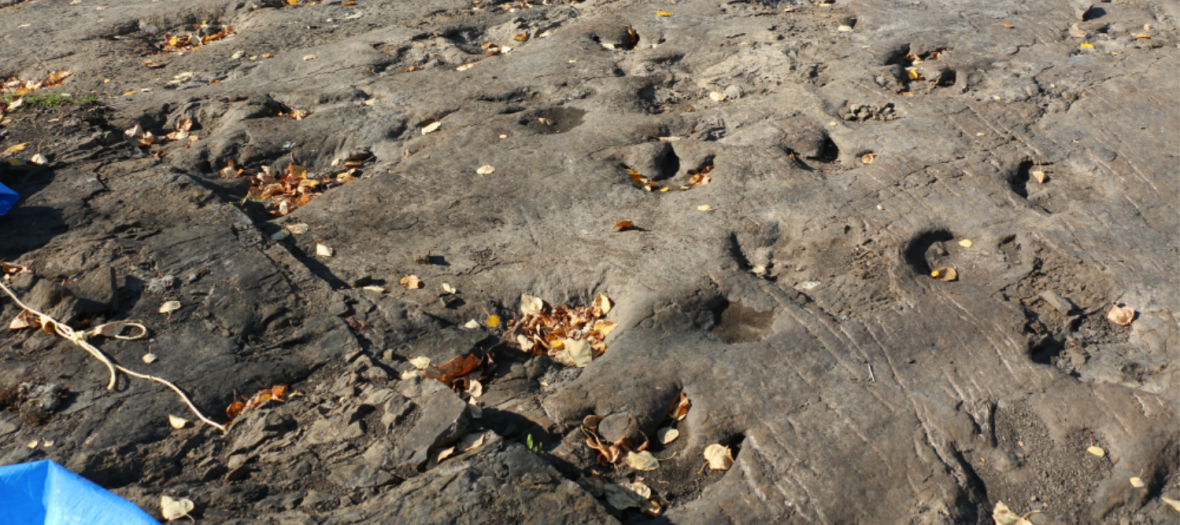
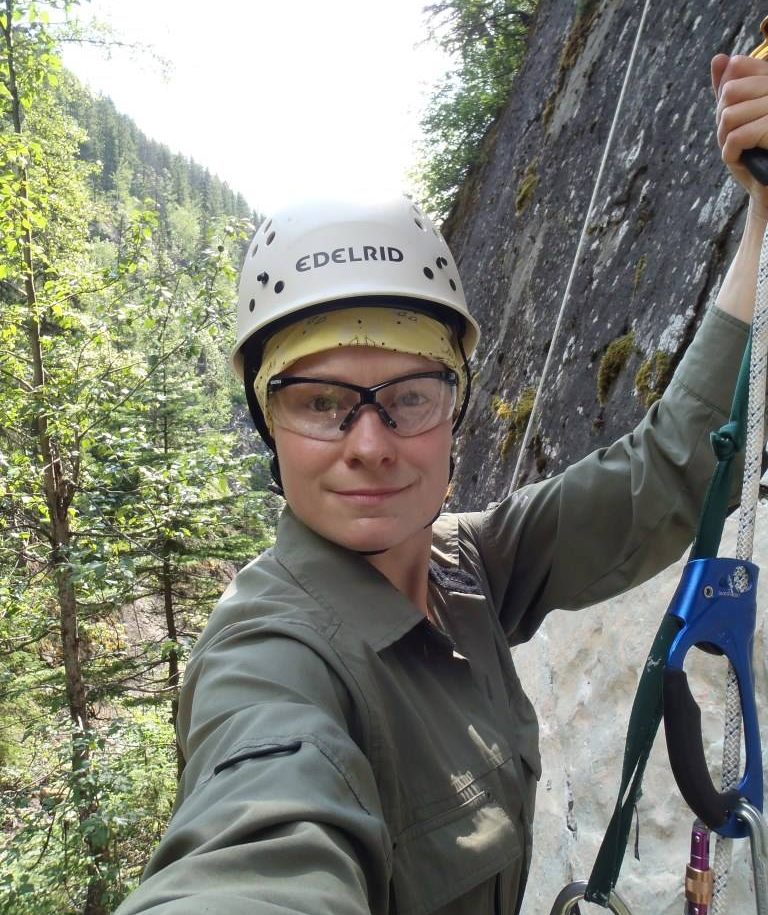
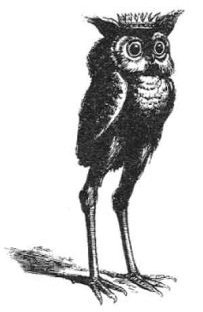
Thank you so much for the great article, it was fluent and to the point. Cheers.
LikeLike
Thank you so much for the great article, it was fluent and to the point. Cheers.
LikeLike
A precise & well-wrtitten post. Thanks heaps for sharing it.
LikeLike